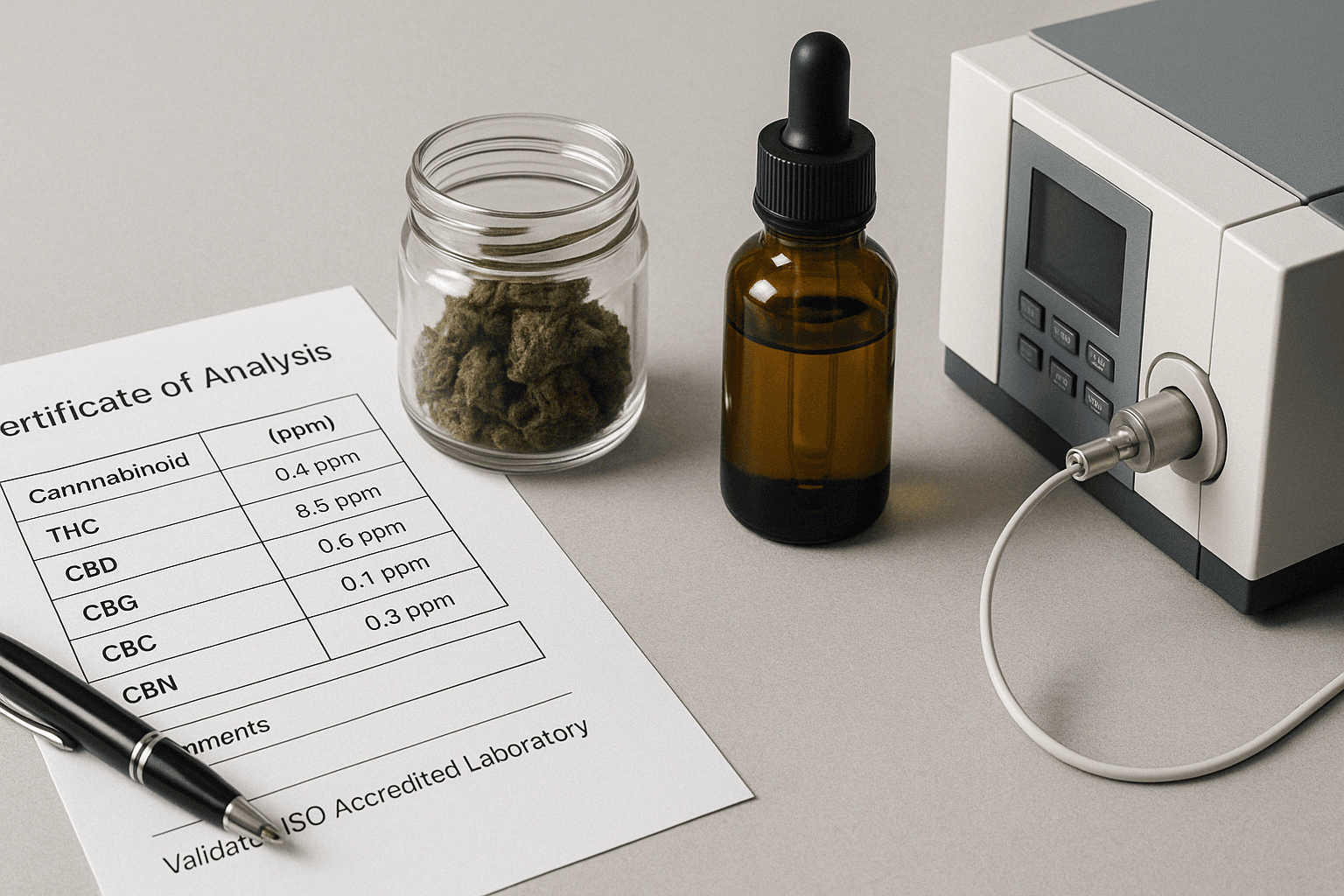Coast 2 Coast Consulting
Guidelines for Reading COAs (Certificates of Analysis) for Cannabinoid Testing in Japan
Written by C2C

Guidelines for Reading COAs (Certificates of Analysis) for Cannabinoid Testing in Japan
As Japan begins to modernize its approach to cannabinoid regulation, understanding how to interpret Certificates of Analysis (COAs) has become critical for compliant market entry. COAs validate the composition and safety of cannabinoid products—and in Japan, a strict compliance threshold of 1 ppm (part per million) for THC and other controlled substances is enforced.
Whether you're exporting ingredients, finished products, or evaluating your supply chain partners, here's a breakdown of what to look for when reviewing COAs intended for Japanese regulators.
1. Understand the Terminology
Before diving into the data, get familiar with two essential acronyms:
LOD (Limit of Detection): The lowest concentration of a compound that can be reliably detected, but not necessarily quantified.
LOQ (Limit of Quantification): The lowest concentration at which the compound can be reliably measured with precision.
Understanding these thresholds helps clarify whether "non-detect" results are truly absent or simply below quantifiable limits.
2. Examine the Results Carefully
In Japan, cannabinoid concentrations must be reported in ppm. Pay close attention to the THC levels listed—any detection above 1 ppm may be grounds for regulatory rejection.
Ensure the results clearly show compliance and aren't just labeled as "ND" (non-detect) without further explanation tied to the LOD/LOQ metrics.
3. Confirm the Instrumentation
Mass spectrometry is the preferred method for cannabinoid detection in Japan due to its precision and sensitivity. When reviewing a COA:
Check that mass spectrometry was used (e.g., LC-MS/MS or GC-MS).
Review the methodology section for technical accuracy and consistency with Japanese standards.
If the equipment or method is unclear, ask the lab for clarification or supplementary documentation.
4. Review Laboratory Comments
Always read the remarks or notes provided by the testing lab. These may include:
Details on sample condition upon arrival
Notes about testing anomalies
Indications of cross-contamination risk or re-testing
These comments can help you interpret borderline results or inconsistencies and prepare supporting documentation if needed during customs or regulatory review.
5. Validate the Lab’s Credentials
Japan's compliance environment is detail-oriented. Ensure the COA comes from a lab that holds ISO/IEC 17025 accreditation or equivalent international certification.
ISO accreditation confirms that the lab adheres to high-quality standards in both methodology and reporting—essential for gaining trust from Japanese import authorities.
Take Away
Reading a COA is more than just checking for “ND” next to THC—it’s about understanding what’s being measured, how it’s measured, and who is doing the measuring. By applying these guidelines, exporters and brand owners can reduce risk, increase transparency, and build credibility in one of the world’s most tightly regulated cannabinoid markets.
If you're preparing to enter Japan or need help navigating COA interpretation and international compliance, Coast 2 Coast Consulting is here to help. With over two decades of global experience, we’ll make sure your documentation meets both technical and regulatory expectations. Connect with us here!
